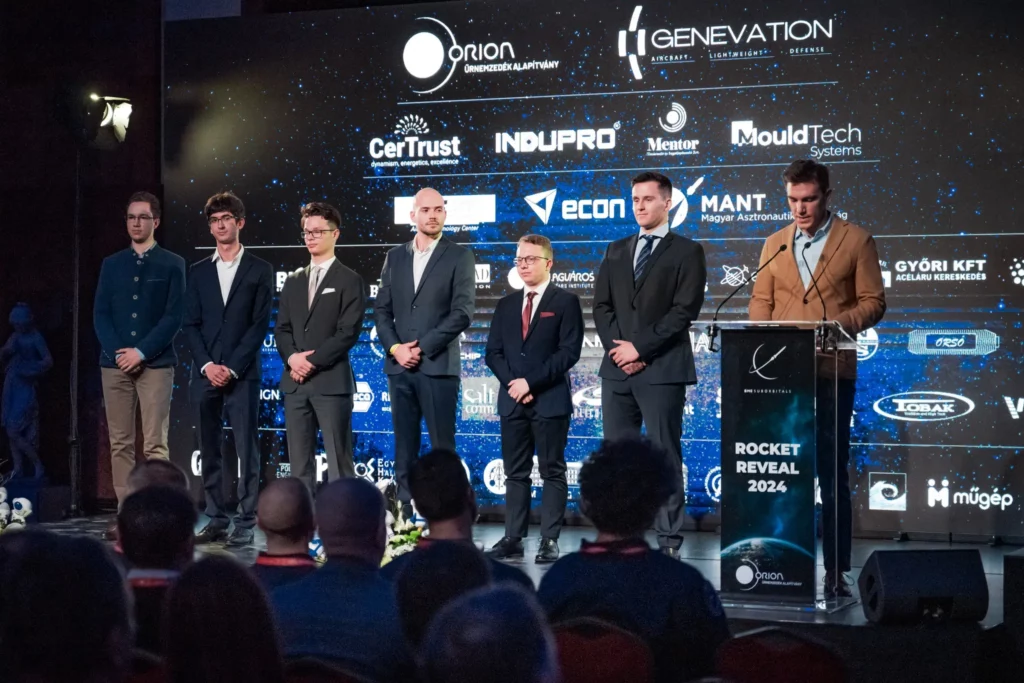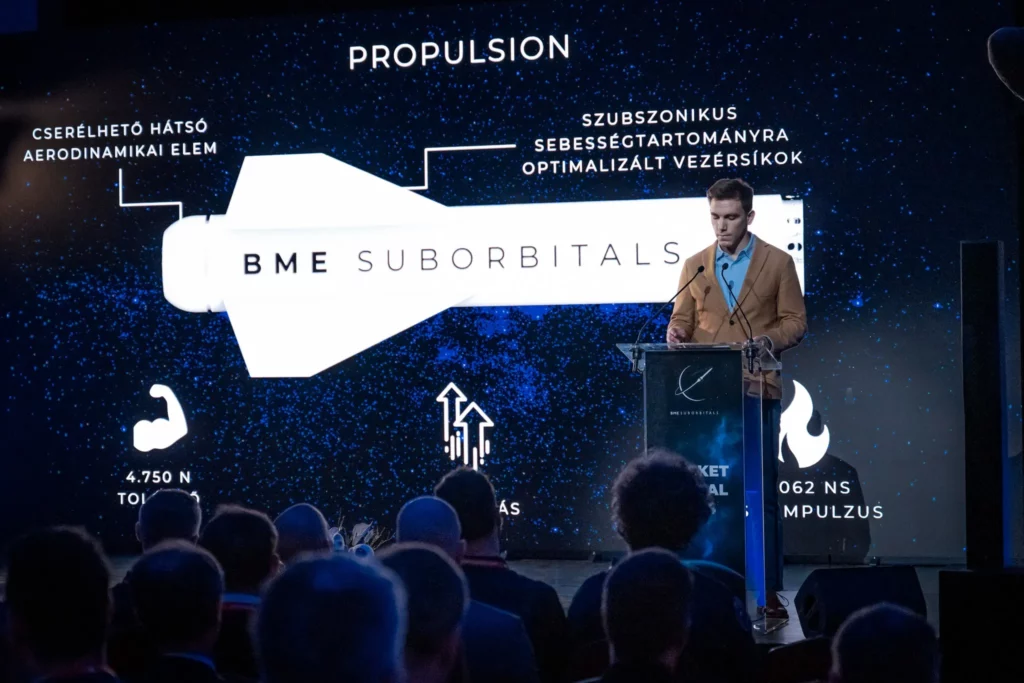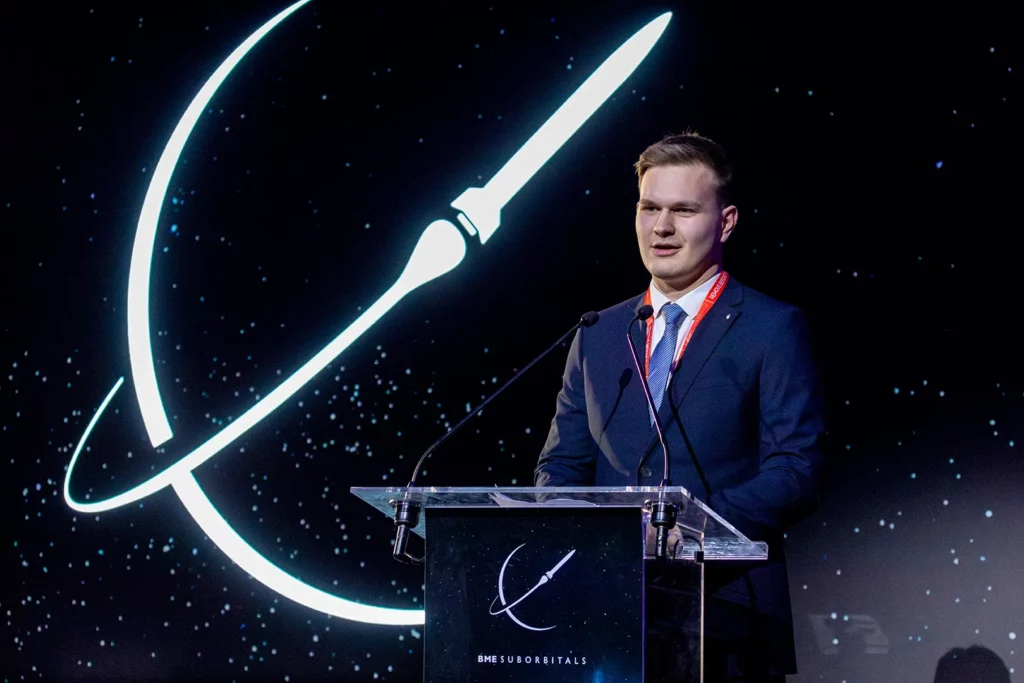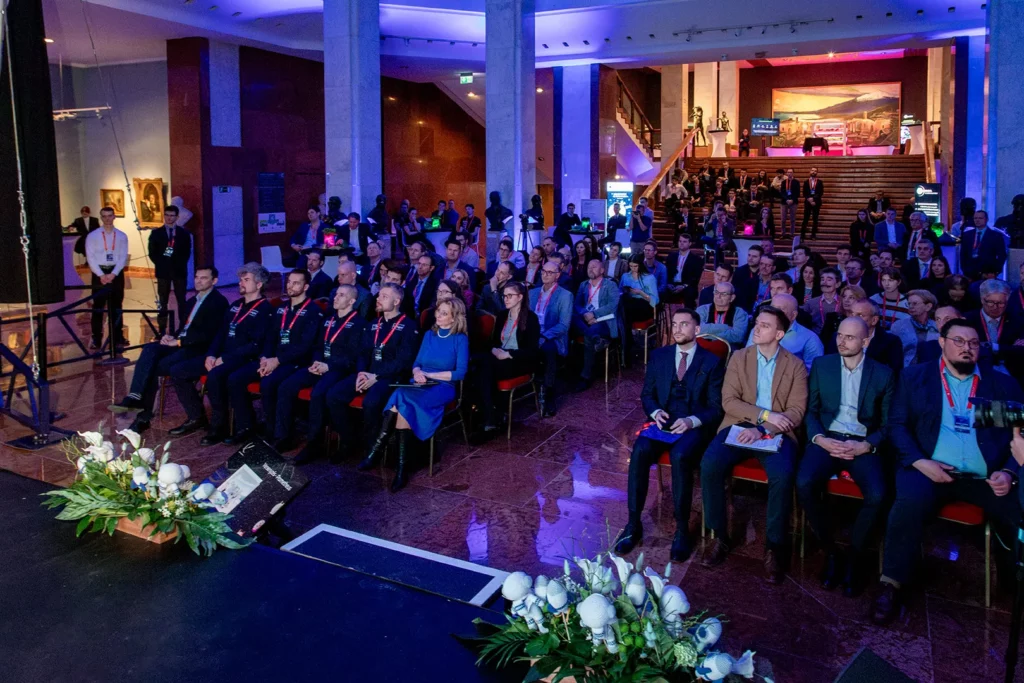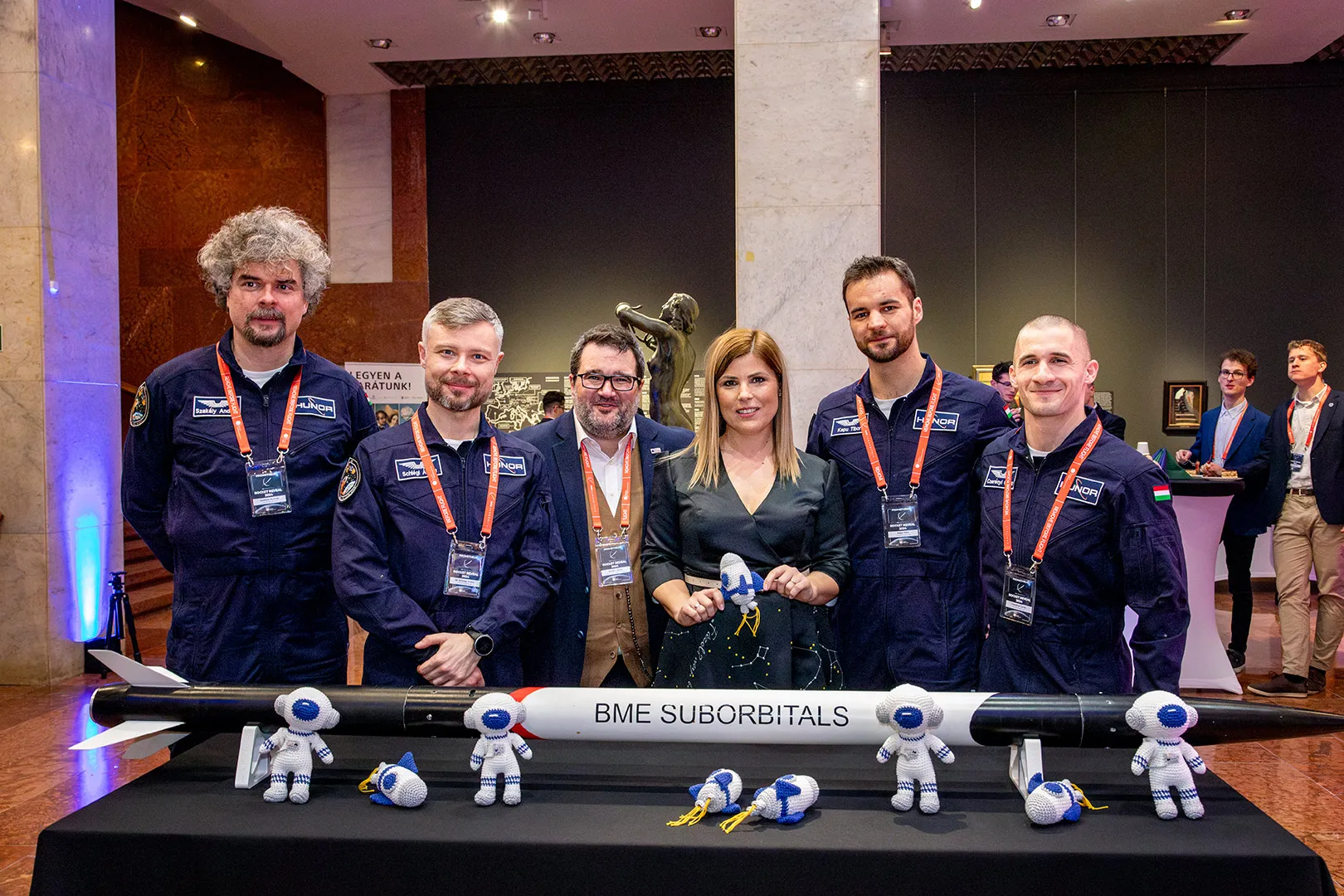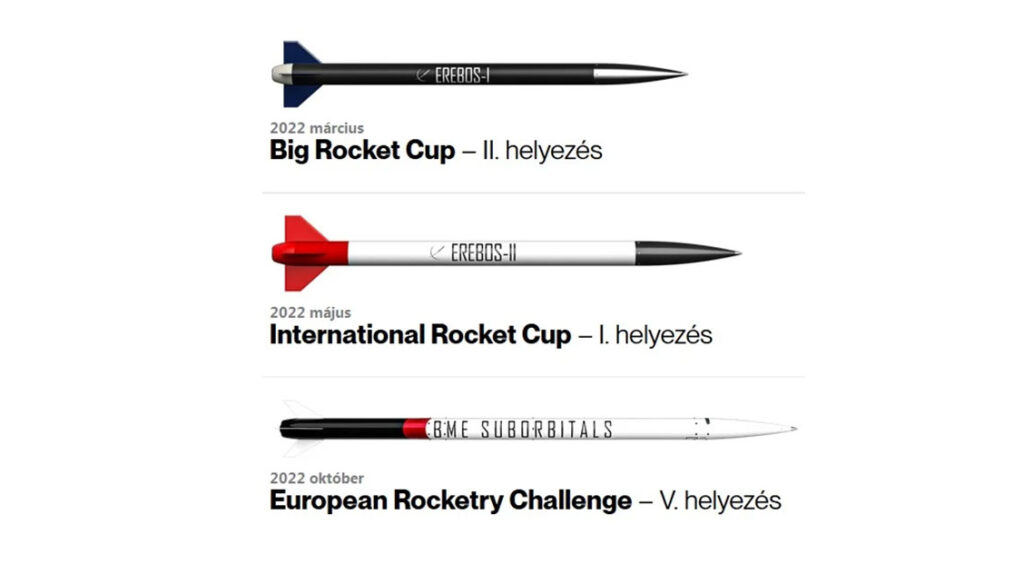Nurturing talent
- BME Suborbitals and the Teller Project
Our talent development activities focus on fostering the preparation and growth of the next generation of talented space researchers. We believe that their innovations and achievements will shape the future of space exploration and lay the foundation for humanity’s continued discoveries and accomplishments.
We are proud to support the BME Suborbitals competition team, which engages in high-level research and development activities. The development of research rockets not only reflects the team’s dedication and talent but also plays a key role in shaping the future of space exploration.
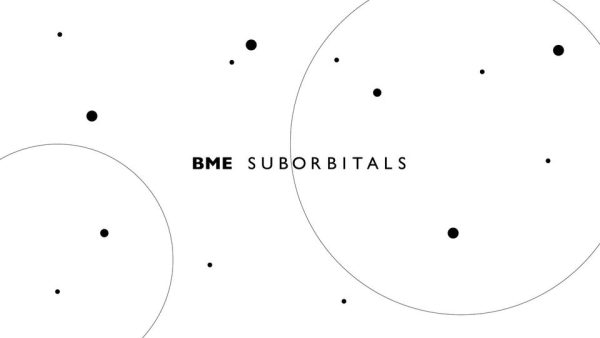
The BME Suborbitals rocket development competition team has been performing at a high level in various international competitions for years and is becoming an increasingly important participant in events related to the Hungarian space industry. On the evening of February 12, 2024, their newest and largest competition rocket to date, Prometheus, was unveiled in a ceremonial event at the Hungarian National Gallery.
With over 120 members and outstanding achievements, the BME Suborbitals team serves as a model for other similar projects. This is why the ORION Foundation encourages enthusiasts not only to support existing projects but also to expand their interest and commitment to space exploration, helping more people understand the significant role this field plays in humanity’s future.
We believe that a rocket is not just a technological achievement, but also an intellectual challenge—a remarkable manifestation of perseverance, innovation, and human determination. A rocket not only lifts us into space but also pushes the boundaries of human potential. The rocket is a symbol—a symbol of the future.


Project TELLER
REXUS is a Swedish-German project supported by the European Space Agency (ESA), aimed at university students and doctoral candidates. Through this program, 8-10 teams can send experiments up to 90-100 km high on a rocket, during which they become familiar with ESA’s space industry standards and the development process of space systems.
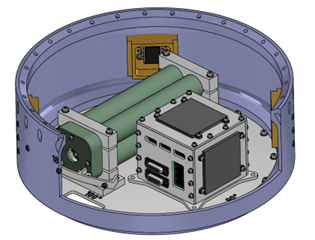
Experiment of Project TELLER
Project TELLER
Two Hungarian teams have previously participated in the REXUS program: GEKKO in 2013 and REM-RED in 2015.
In the TELLER REXUS experiment, the team developed a radiation detection system capable of estimating direction, with the goal of gaining more information about the nature of radiation. This region, 30-100 km in altitude, remains largely unexplored. Below it, we use weather balloons for measurements, and above it, satellites, but the gap between the two awaits further investigation.
Perhaps the most interesting feature of the experiment is its ability to estimate the direction of radiation. Beyond the scientific value, the recently launched space engineering master’s program and the Hungarian space industry could benefit from the project in the long run, while participating students gain practical space industry experience as they enter the workforce.
The team consisted of 8 space engineering students, 1 physicist, and 1 mechanical engineering student.
Find more details about the project here:



